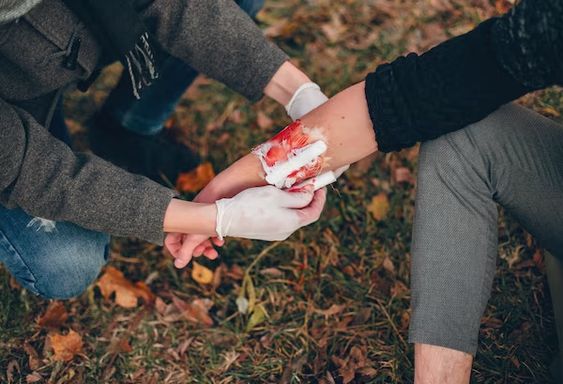In life, there are bound to be bumps and bruises. Generally, a cut on the hand of an ordinary person will heal in two or three days, but for some people, the wound will take a long time, or even half a year to heal, such as for diabetic patients. What is the reason for this? It turns out that this kind of wound that does not heal after 6 to 8 weeks of standard treatment is a chronic wound.

Why do we need to understand the cause of the disease first?
Only by finding the cause of the disease can we lay a solid foundation for subsequent wound repair. For example, for patients with diabetic foot, controlling blood sugar levels is the primary task; for ulcers caused by vascular factors, we need to improve local blood circulation and oxygen supply, such as bed rest, raising the affected limb, and using drugs to improve circulation, to provide a good healing environment for the wound; and patients with pressure sores need to reduce local pressure and improve blood circulation through changes in body position and ultra-short wave infrared irradiation.
Treatment method:
Debridement: Debridement is an essential step. By debridement in steps and multiple times, we can transform the contaminated wound surface into a clean wound surface and prepare for subsequent healing. During the debridement process, we must pay special attention to the poor local blood supply, aging of granulation tissue, and complex infection bacteria to ensure that each step of the operation is accurate and in place.
Wound medication :
Scientific and appropriate medication plays a vital role in accelerating ulcer healing. We should start from multiple aspects such as cell aging, tissue ischemia, and bacterial colonization, and select topical medications that can control infection, promote tissue regeneration, and improve local ischemia. During the inflammation period of the wound, we must be particularly vigilant against infections such as fungi and anaerobic bacteria, and effectively control wound inflammation through topical wound care ointments, sensitive antibiotics, and other drugs. During the proliferation period of the wound, we can use cell growth factors, vasoactive drugs, etc. to promote cell proliferation and differentiation, increase the oxygen partial pressure in the ulcer tissue, and accelerate the healing process. In addition, auxiliary treatment methods such as zinc, fat transplantation, and gelatin microparticles can also promote wound healing to varying degrees.
Skin flap transplantation :
For some patients with severe necrotic tissue and bone involvement, we may need to use flap transplantation. After removing the necrotic tissue and scar tissue, we use adjacent skin flaps or muscle flaps to cover the cavity to provide a new growth environment for the wound. However, it is worth noting that the wound surface of the donor area produced by flap transplantation should be specially protected to prevent the formation of new ulcers.
Use functional wound dressings:
Proper moisture on the wound can speed up healing. Using special wound dressings to keep the wound moist and in a good healing environment can not only promote wound healing but also reduce the itching caused by dry wounds.
Closed negative pressure drainage technology :
It is also one of the effective means of treating chronic ulcers. This technology uses medical polymer composite materials as wound materials for repairing and covering soft tissues, transforming open wounds into relatively closed wounds, effectively preventing contamination and secondary infection. Under negative pressure, the blood flow to the wound increases, stimulating the growth of granulation tissue, while compressing to stop bleeding. This technology can completely remove the exudate in the wound and cavity, improve local circulation, promote the rapid growth of granulation tissue, and shorten the repair time.
Hyperbaric oxygen therapy :
It is also a recommended treatment method. Hyperbaric oxygen and antibiotics have a synergistic effect. By increasing oxygen diffusion, increasing the blood oxygen content and oxygen partial pressure in the wound, correcting the insufficient oxygen supply to the lesion tissue, and enhancing the bactericidal ability of white blood cells. At the same time, hyperbaric oxygen can also reduce blood viscosity, improve microcirculation, promote the establishment of collateral circulation, improve capillary permeability, and reduce wound edema. This treatment method has important application value in the treatment of chronic ulcers.

Care tips:
Adequate nutrition is essential for wound healing. Nutrients such as protein, vitamin C, and zinc all contribute to wound repair. The diet should include foods rich in protein (such as fish, eggs, and beans), fresh fruits and vegetables, and foods rich in zinc (such as nuts and seeds). If necessary, you can take some nutritional supplements under the advice of your doctor.
For more information on Innomed® Alginate Dressing, Refer to the Previous Articles. If you have customized needs, you are welcome to contact us; You Wholeheartedly. At longterm medical, we transform this data by Innovating and Developing Products that Make Life Life easier for those who need loving care.
Editor: kiki Jia

 English
English عربى
عربى Español
Español русский
русский 中文简体
中文简体








